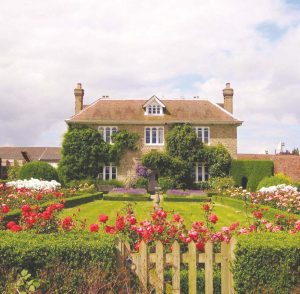Sweet Success with Chocolate-Box Charm
A few pointers for those looking to breathe life back into a traditional cottage
 The archetypal dwelling of the rural poor for hundreds of years, the cottage is probably the most traditional building type in Britain. The ‘chocolate-box’ charm remains part of the ultimate rural idyll, and the compact nature means restoration costs are not necessarily prohibitive.
The archetypal dwelling of the rural poor for hundreds of years, the cottage is probably the most traditional building type in Britain. The ‘chocolate-box’ charm remains part of the ultimate rural idyll, and the compact nature means restoration costs are not necessarily prohibitive.
When taking on something of this nature it is important not to rush into any major decisions. Live with the house and the space for a while before committing to any renovations. You may end up changing your mind as you learn to live with the house during different seasons!
Handle your project in small manageable chunks – don’t tackle the whole house at once. It may take time to find the right tradespeople, and working on small projects gives you the chance to try them out before you are committed to a large outlay.
Don’t be tempted to extend your cottage by more than 25%, or it will lose its authenticity and quite frankly will be no longer a cottage! If you need more space, then consider moving home.
Remember that cottages were traditionally homes of the poorest members of society, so don’t be tempted to over-modernise the interior or make it too luxurious. Old buildings weren’t designed for modern living. Space and light are wonderful things, but you may have to compromise on them if you want to enjoy the benefits of a traditional cottage.
It really isn’t necessary to strip back every room to expose original details. If later additions add to the history of the room, then consider keeping them. However, modern fittings can have their place in listed buildings: for example, simple contemporary electrical fittings are a lot more honest than many brass reproductions.
Do your research before embarking on any renovations – find out as much as you can about local building materials, styles, and building types. Modern building and decorating techniques may not always be appropriate. For example, consider using lime instead of cement and distemper instead of plastic-based paints.
Remember, the process of house restoration takes time and care. If you’re employing someone else to do it, it can become quite expensive. For homeowners juggling a limited budget it may be the perfect opportunity to acquire some new skills, including carpentry, plumbing and decorative arts.
Using reclaimed materials wherever possible will not only help ensure that your renovated home is in keeping with the period in which it was originally built, but may also keep costs down. Get old window glass from skips, ask builders to look out for items, or place a small ad. As a last resort go to a reclamation yard – but don’t be tempted by the fancy fittings that were designed for larger and more extravagant homes.
While it’s important to ensure that the overall structure is in keeping with your home’s period style, the right antique furniture can also help accurately revive a cottage’s past.
Consider establishing a traditional cottage garden with old-fashioned flowers, useful herbs and vegetables, climbers, self-seeding annuals and productive fruit trees for an informal, ‘just happened’ natural look. There are plenty of good books on the subject.
It might be worthwhile joining the Society for the Protection of Ancient Buildings (www.spab.org.uk) who organise courses and publish great leaflets and publications.
However, before you attempt any work whatsoever you must consider your legal obligations. If your cottage is listed or in a conservation area, find out from your local authority exactly what you can and can’t do (be aware that this may include garden walls, railings, sheds, garages etc.).
Remember you are the guardian of your property. In the history of a 300-year old cottage your residency is but a short event, so enjoy your time in the home!
Originally published in our Summer 2017 issue.
